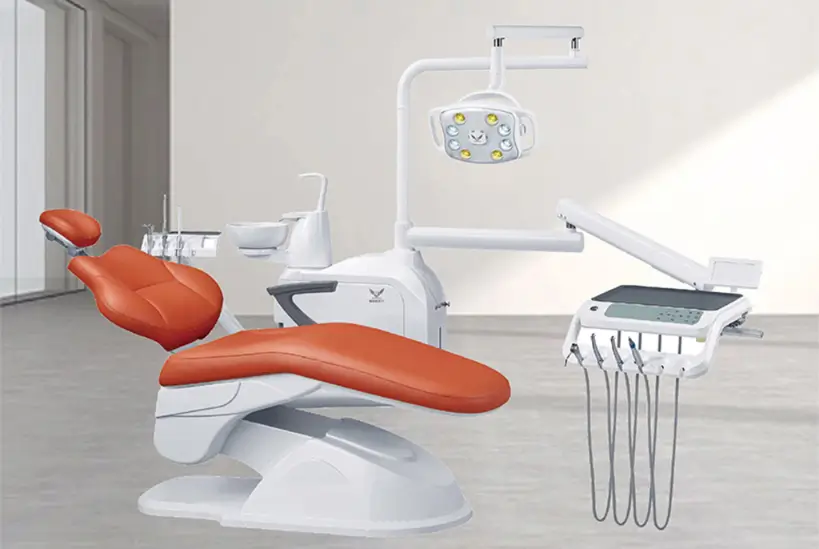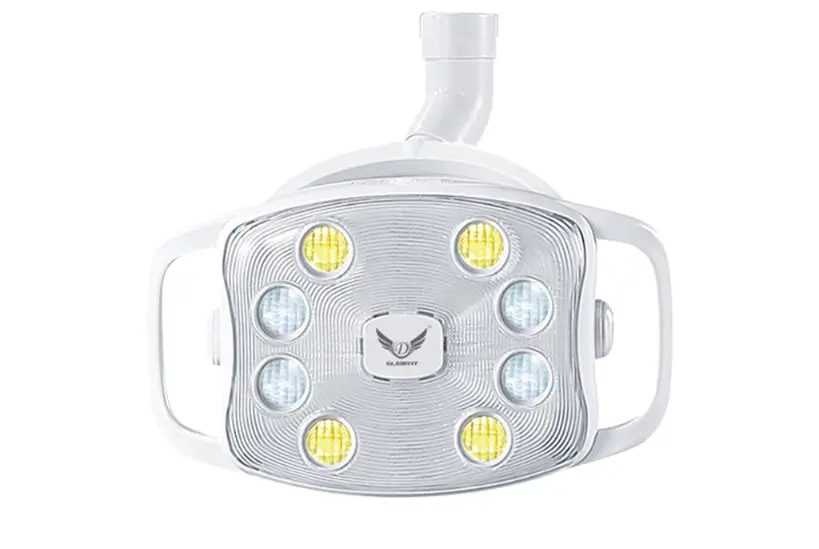
Every dental visit depends on two basic things: clear sight and safe care. Neither can happen without proper light. A steady, bright light lets you spot details, avoid mistakes, and help patients feel calmer in the chair. That is why LED dental lights are now a must in modern clinics.
Without the right light above it, you cannot work at your best. Dark corners or uneven beams slow you down and can even cause errors. Patients also notice when lighting is too harsh or too dim. LEDs fix this problem by offering steady, bright light that stays cool and natural.
LEDs produce a clear, even beam with little to no shadow. This makes it much easier to see early signs of cavities or fine cracks in enamel. Compared with old halogen bulbs, LEDs keep their brightness consistent. They do not flicker or fade while you are mid treatment. They also stay cool, so no one feels the heat on their face. Many dentists say their eyes feel less strained after a long day with LED lights. Patients, too, tend to stay more relaxed.
Light is not only about sight. It also plays a big part in overall safety. With the right LED light, you lower risks of cross infection, protect staff from fatigue, and make the room more welcoming.
Yes. LED dental lights often have smooth covers with no hidden gaps. This makes them easy to wipe down between patients. No little spaces for germs to hide. Daily cleaning becomes faster, and you spend less time worrying about hygiene.
Think back to older bulbs. They got hot. Patients felt it on their skin, and some even squinted under the glare. LEDs remove those issues. They shine bright but stay cool. The color tone is softer too. Kids, or nervous patients, often feel calmer because the light doesn’t blind them.
Not every LED dental light has the same setup. Some are simple, others come with advanced settings. When choosing, think about what you do most often in your clinic.
Very important. Different cases need different brightness. Whitening sessions need stronger beams. A quick follow up exam can use a softer tone. With adjustable intensity, you can change levels in seconds. This helps protect patients’ eyes and still gives you the detail you need.
Yes. If the arm of the light is heavy or stiff, you may find yourself bending awkwardly. Over time, that leads to sore shoulders or back pain. A light with smooth movement and easy reach saves you from that. It also lets you stay focused on the patient, not the equipment.
Today’s dental units are more advanced than ever. Many already come with built in LED lights. This keeps everything neat and aligned. For example, the GD-S200 Plus Integral Dental Unit combines chair, controls, and lighting into one system. You can move the chair and light together without constant adjustments.

Standalone lights work fine, but integrated ones are usually easier. When the chair moves, the light follows. This saves time during treatment and helps keep focus where it belongs, on the patient. Many clinics that switch to integrated systems report smoother daily routines and fewer delays.
Yes. While the starting cost is higher than halogen bulbs, LEDs last far longer. Many models can run more than 50,000 hours before needing replacement. That means years of steady use. Less downtime, fewer repairs, and more value over time.
LEDs also use less electricity. That shows up in your utility bill. Over the years, savings add up. It also helps clinics meet eco friendly goals, which more patients now notice and respect. Choosing LEDs is both smart for business and good for the environment.
One supplier known for these solutions is Gladent. Based in Foshan, they have built a reputation for designing dental chairs, lights, and full units that fit real clinic needs. If you read their about page, you will see how they mix strict production with practical design, while also meeting global safety standards. And if you want personal advice, you can reach them through their contact page. For many dentists, this kind of direct support matters more than price. It feels less like dealing with a seller and more like working with a partner who cares about your clinic’s future.
Q1: How long do LED dental lights usually last?
A: They often last more than 50,000 hours, which equals many years of regular use.
Q2: Do LED dental lights cause patient discomfort?
A: No. They produce almost no heat and avoid harsh glare, so patients stay more comfortable.
Q3: Can LED dental lights be added to existing dental chairs?
A: Yes. Many models can be fitted to older chairs, though integrated systems often work more smoothly.
Q4: Are LED dental lights difficult to clean?
A: Not really. Most have simple, sealed surfaces that you can wipe quickly after each use.
Q5: Why are LEDs considered safer than halogen lights?
A: They give steady brightness without heat, reduce infection risk thanks to easy cleaning, and help create a calmer clinic atmosphere.